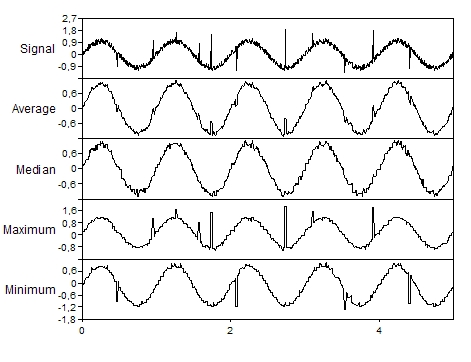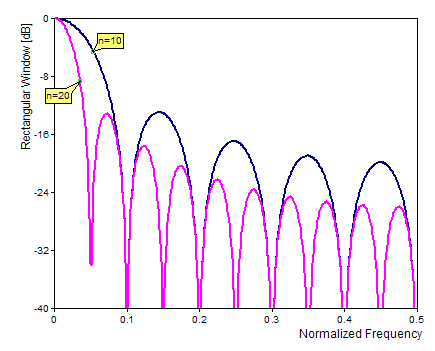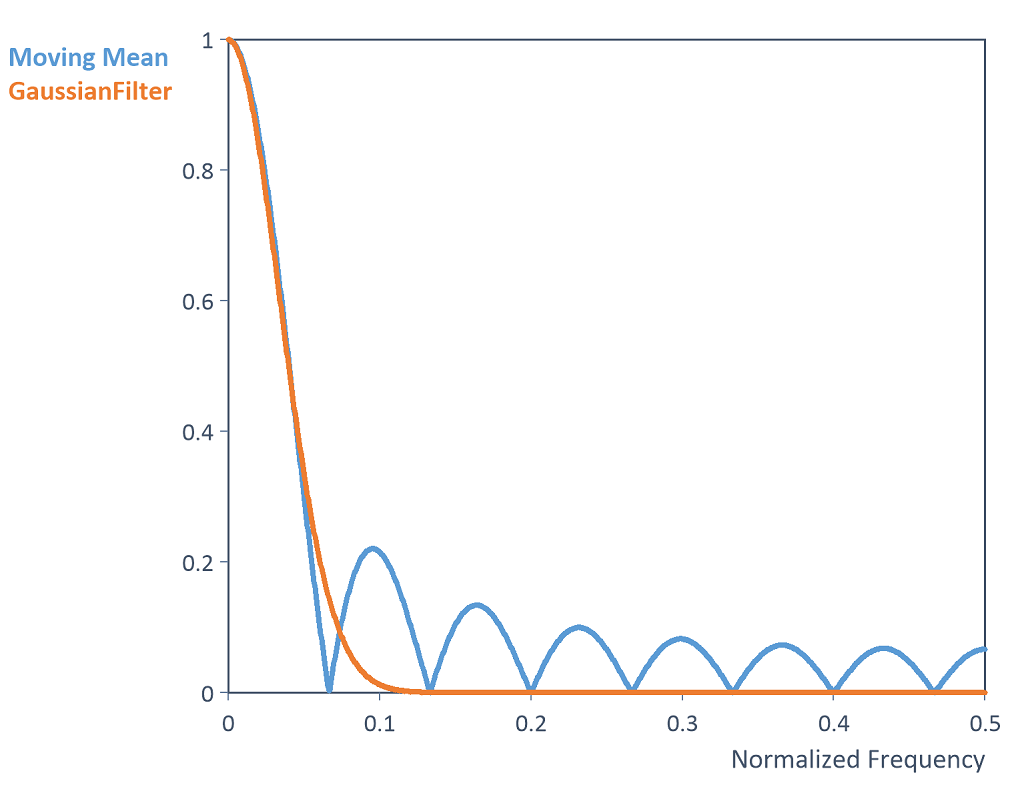Signal Smoothing Analysis Object and Template *
This analysis object allows you to smooth a data set. The object can process data series, data matrices, signals and signal series. The object calculates moving averages, moving median values, maxima or minima. The Savitzky-Golay, LOESS, LOWESS and Gaussian filters are also available with the Digital Filters option. You can set the smoothing width N, i.e., the number of values that are to be analyzed for each value in the result. The moving average smoothes noisy signals. The moving median, on the other hand, is suited especially for filtering outlier values from data sets. The median of a sample of values is the center value of the sorted sample. The Savitzky-Golay filter is not optimized for discarding higher frequencies, but instead is optimized for discarding statistic moments of a higher order. LOESS and LOWESS are locally weighted regression smoothing filters that use a quadratic or linear model function for iterative calculations. The Gaussian filter is a low-pass filter and smooths a data set through convolution with a Gaussian normal distribution with an adjustable standard deviation of σ (width). Better smoothing is achieved using the Gaussian filter than using the moving average.
The following illustration shows the effects of different smoothing methods on a noisy signal with outliers. It is important to note that the median filter is the best tool for removing outliers.

Smoothing by way of the floating mean value is a linear filter operation. This corresponds to a convolution of the signal with a rectangular window whose width corresponds to the smoothing width. The following illustration shows the transfer function of the rectangular window for n = 10 and n = 20:

The following figure shows the comparison between the amplitude response of the Gaussian low-pass filter with a standard deviation of 4.7 to a moving average with a smoothing width of 7. High frequencies in particular are suppressed much better than when using the moving average:

FPScript Functions Used
See Also
* This analysis object is not available in FlexPro View.
You might be interested in these articles
You are currently viewing a placeholder content from Facebook. To access the actual content, click the button below. Please note that doing so will share data with third-party providers.
More InformationYou need to load content from reCAPTCHA to submit the form. Please note that doing so will share data with third-party providers.
More InformationYou are currently viewing a placeholder content from Instagram. To access the actual content, click the button below. Please note that doing so will share data with third-party providers.
More InformationYou are currently viewing a placeholder content from X. To access the actual content, click the button below. Please note that doing so will share data with third-party providers.
More Information